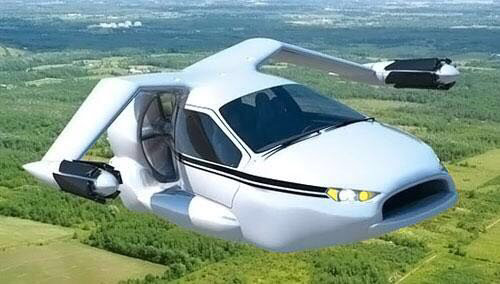I am asked to set forth the development of the two-surface"type offlying machine which is now used with modifications by Wright Brothers,Farman, [IDelagrange, Herring and others[]Now deadThis type originated with Mr. F. H. Wenham, who patented it inEngland in 1866 (No. 1571), taking out provisional papers only. In theabridgment of British patent Aeronautical Specifications(1893)it isdescribed as followsTwo or more aeroplanes are arranged one above the other, ansupport a framework or car containing the motive power. The aeroplanesare made of silk or canvas stretched on a frame by wooden rods or steelrbs. When manual power is employed the body is placed horizontally, andoars or propellers are actuated by the arms or legsA start may be obtained by lowering the legs and running down hillor the machine may be started from a moving carriage One or more screwpropellers may be applied for propelling when steam power is employedOn June 27, 1866, Mr. Wenham read before the "Aeronautical Societyof Great Britain, then recently organized, the ablest paper ever presentedto that society, and thereby breathed into it a spirit which has continued tothis day. In this paper he described his observations of birds, discussed thelaws goveming flight as to the surfaces and power required both withwings and screws, and he then gave an account of his own experimentswith models and with aeroplanes of sufficient size to carry the weight of amanSecond Wenham Aeroplane.His second aeroplane was sixteen feet from tip to tip. A trussed spar atthe bottom camied six superposed bands of thin holland fabric fifteenvirtually giving a length of wing of ninety-six feet and one hundred andwenty square feet of supporting surface. The man was placed horizontallyon a base board beneath the spar. This apparatus when tried in the windwas found to be unmanageable by reason of the fluttering motions of thefabric, which was insufficiently stiffened with crinoline steel, but MrWenham pointed out that this in no way invalidated the principle of theapparatus, which was to obtain large supporting surfaces withoutincreasing unduly the leverage and consequent weight of spar required, byacc

This principle is entirely sound and it is surprising that it is, to this dayot realized by those aviators who are hankering for monoplanesExperiments by StringfellowThe next man to test an apparatus with superposed surfaces was MrStringfellow, who, becoming much impressed with Mr. Wenham'sproposal, produced a largish model at the exhibition of the AeronauticalSociety in 1868. It consisted of three superposed surfaces aggregating 28square feet and a tail of 8 square feet more. The weight was under 12pounds and it was driven by a central propeller actuated by a steam engineoverestimated at one-third of a horsepower. It ran suspended to a wire onits trials but failed of free flight, in consequence of defective equilbrium.This apparatus has since been rebuilt and is now in the National Museumof the smithsonian Institution at Washington Linfield's unsuccessfulEffortsIn 1878 Mr. Linfield tested an apparatus in England consisting of acigar-shaped car, to which was attached on each side frames five feetsquare, containing each twenty-five superposed planes of stretched andvanished lmen eighteen inches wide, and only two nches apart, thusreminding one of a spanish donkey with panniers. The whole weighed twondred and forty pounds. This was tested by being mounted on a flat carbehind a locomotive going 40 miles an hour. When towed by a line fifteenfeet long the apparatus rose only a little from the car and exhibited suchunstable equilibrium that the experiment was not renewed. The lift wasonly about one- third of what it would have been had the planes beenproperly spaced, say their full width apart, instead of one-ninth aserroneously devised
Renard's Dirigible ParachuteIn 1889 Commandant Renard, the eminent superintendent of theFrench Aeronautical Department, exhibited at the Panis Exposition of thatyear, an apparatus experimented with some years before, which he termeda" dirigible parachute. It consisted of an oviform body to which werepivoted two upright slats carrying above the body nine long superposedfat blades spaced about one-third of their width apart. When thisapparatus was properly set at an angle to the longitudinal axis of the bodyand dropped from a balloon, it travelled back against the wind for aconsiderable distance before alighting. The course could be varied by arudder. No practical application seems to have been made of this device bythe French War Department, but Mr. J. P. Holland, the inventor of thesubmarine boat which bears his name, proposed in 1893 an arrangement ofpivoted framework attached to the body of a fying machine whichcombines the principle of Commandant Renard with the curved bladesexperimented with by Mr. Phillips, now to be noticed, with the addition oflifting screws inserted among the bladesPhillips Fails on Stabilaty Problem.In 1893 Mr. Horatio Phillps, of England, after some very interestingexperiments with vanous wing sections, from which he deduceconclusions as to the shape of maximum lift, tested an apparatusresembling a venetian blind which consisted of fifty wooden slats ofpeculiar shape, 22 feet long, one and a half inches wide, and two inchesapart, set in ten vertical upright boards. All this was camed upon a bodyprovided with three wheels. It weighed 420 pounds and was driven at 40miles an hour on a wooden sidewalk by a steam engine of ninehorsepower which actuated a two-bladed screw. The lift was satisfactory.being perhaps 70 pounds per horsepower, but the equilbrium was quitebad and the experiments were discontinued. They were taken up again in1904 with a similar apparatus large enough to cary a passenger, but themachine was tested, in which four sets of frames, carry ing similar sets ofslat"sustainers" were inserted, and with this arrangement the longitudinalstability was found to be very satisfactory. The whole apparatus, with theoperator, weighed 650 pounds. It flew about 200 yards when driven by amotor of 20 to 22 hp. at 30 miles an hour, thus exhibiting a lift of about32 pounds per hp, while it will be remembered that the aeroplane ofWright Brothers exhibits a lifting capacity of 50 pounds to the hp
